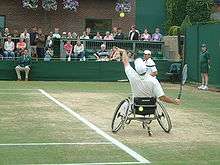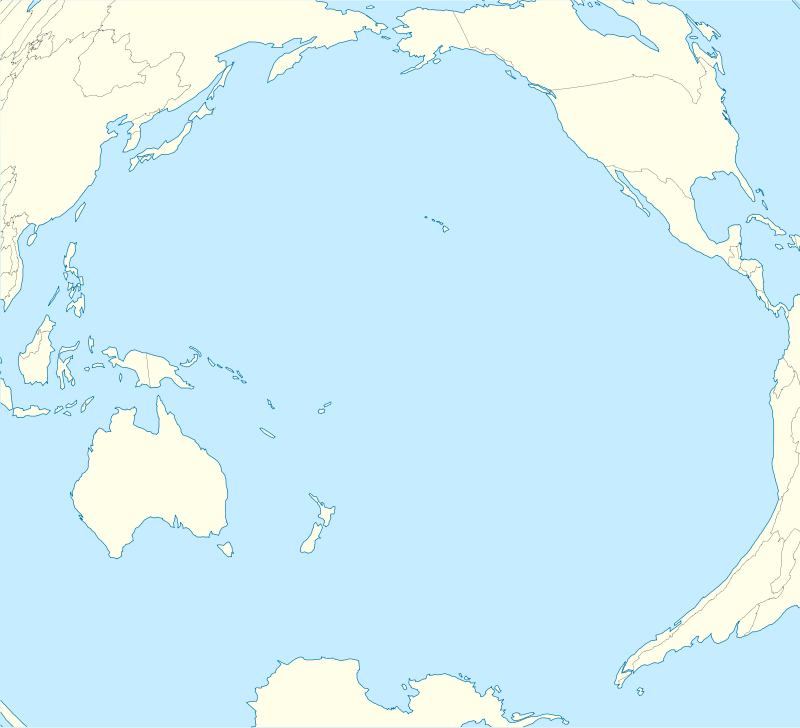FESPIC Games
| Motto | Overcoming Challenges, Inspiring Others |
|---|---|
| First event | 1975 |
| Occur every | four years |
| Last event | 2006 FESPIC Games in Kuala Lumpur |
| Purpose | Multi-sport event, Far East and South Pacific Games for persons with disability |
| Headquarters | Malaysia |
| APC President | Dato’ Zainal Abu Zarin |
| Website | FESPIC Federation |
The FESPIC Games[1] or the Far East and South Pacific Games for the Disabled, was a multi-sports games in Asia and the South Pacific region.
The FESPIC Games, which started in 1975, was held nine times and bowed out a success[2] in December 2006, at the conclusion of the 9th FESPIC Games[3] in Kuala Lumpur, Malaysia.
For Asian countries, the FESPIC Games was replaced by the Asian Para Games starting with the inaugural 1st Asian Para Games in 2010 in Guangzhou, China after the 16th Asian Games. The Asian Para Games, the parallel event for athletes with physical disabilities, is a multi-sport event held every four years after every Asian Games. The FESPIC and Asian Games had adopted the strategy used by the Olympic and Paralympic Games of having both games in the same city.
Objectives
- To promote general interest and welfare for the disabled in the region through participation in sports events and other activities
- To deepen mutual understanding and friendship of the disabled
- To promote rehabilitation for the disabled in the region through sports activities
History
The first FESPIC Games was held in Oita, Japan in 1975. There were limited opportunities for persons with disabilities in Asia and the Pacific to participate in sports at the time. The FESPIC Games was launched to address this issue and promote understanding toward disabled persons in each country, as well as improve their social welfare.
The number of participant countries increased during FESPIC history. Central Asian countries Kazakhstan, Uzbekistan, Kyrgyzstan, Turkmenistan and Tajikistan, as well as Armenia and Azerbaijan, first participated in the 7th FESPIC Games in 1999. The Middle Eastern countries were allowed to compete in the 9th FESPIC Games in 2006, along with Timor-Leste. Middle East countries were previously not allowed to compete in FESPIC Games from 1975 to 2002 because these countries were Africa/Middle Eastern members.
List of FESPIC Games
| Edition | Year | Host City | Host Nation | Start Date | End Date | Nations | Competitors |
|---|---|---|---|---|---|---|---|
| I | 1975 | Oita | 1 June | 3 June | 18 | 973 | |
| II | 1977 | Parramatta | 20 November | 26 November | 16 | 430 | |
| III | 1982 | Sha Tin | 31 October | 7 November | 23 | 744 | |
| IV | 1986 | Surakarta | 31 August | 7 September | 19 | 834 | |
| V | 1989 | Kobe | 15 September | 20 September | 41 | 1,646 | |
| VI | 1994 | Beijing | 4 September | 10 September | 42 | 2,081 | |
| VII | 1999 | Bangkok | 10 January | 16 January | 34 | 2,258 | |
| VIII | 2002 | Busan | 26 October | 1 November | 40 | 2,199 | |
| IX | 2006 | Kuala Lumpur | 25 November | 1 December | 46 | 3,641 |
And one edition from Youth Games:
| Edition | Year | Host City | Host Nation | Start Date | End Date | Nations | Competitors |
|---|---|---|---|---|---|---|---|
| I | 2003 | Kowloon-Sha Tin | 24 December | 27 December | 15 | 584 |

The FESPIC Games later on became the springboard for athletes from Asia and the Pacific to dream big and to reach the Paralympic Games. Disabled sailing in Asia is one such sport. Teams from Australia,[4] China, Malaysia, the Philippines and Singapore started in the 2006 FESPIC Games and consistently performed to sail in the 2008 Beijing Paralympics, with Australian Rachel Cox and her helmsman winning the Silver[5] in the 2-person Keelboat event.
"As participation in disabled sailing grows in that area of the world, the event is being considered as a developmental competition and will be sailed in the Access Liberty, of which 18 will be supplied at the event for competitors entering. ... As a development sport at the event, and as disabled sailing is still in a developing form in FESPIC countries, the competition will be open to any sailor who is able to be classified under the IFDS Functional Classification System.[6]
The 9th FESPIC Games was the last and final edition of the series which took place in 2006. For Asian countries, the FESPIC Games was replaced by the Asian Para Games, starting with the inaugural 2010 Asian Para Games which was held in 2010 Guangzhou, China after the 16th Asian Games.
Sports
Target Sports
Water Sports
|
Ball Sports
|
See also
References
- ↑ What is FESPIC Games?
- ↑ Closure of FESPIC Federation
- ↑ 9th Far East and South Pacific Games for the Disabled (FESPIC) Games
- ↑ Lara Watts, Thursday, 30 November 2006 (2006-11-30). "Silver and two bronze for Australian sailors at FESPIC Games". Yachting.org.au. Retrieved 2011-12-09.
- ↑ Schedules and Results – Sailing, the Beijing Organizing Committee for the Games of the XXIX Olympiad
- ↑ "Sailing To Be Included In FESPIC Games". Sailing.org. 2004-05-28. Retrieved 2011-12-09.
External links
- The official website of 9th FESPIC Games
- 2010 Asian Games Guangzhou Official Website
- Dumapong wins silver in Busan FESPIC
- International Association for Disabled Sailing (IFDS)
- International Paralympic Committee
- Cerebral Palsy International Sport and Recreation Association
- International Blind Sports Association
- INAS-FID: International Sports Federation for Persons with Intellectual Disability
- International Wheelchair and Amputee Sports Federation
- Discussion forum of Disabled sports
